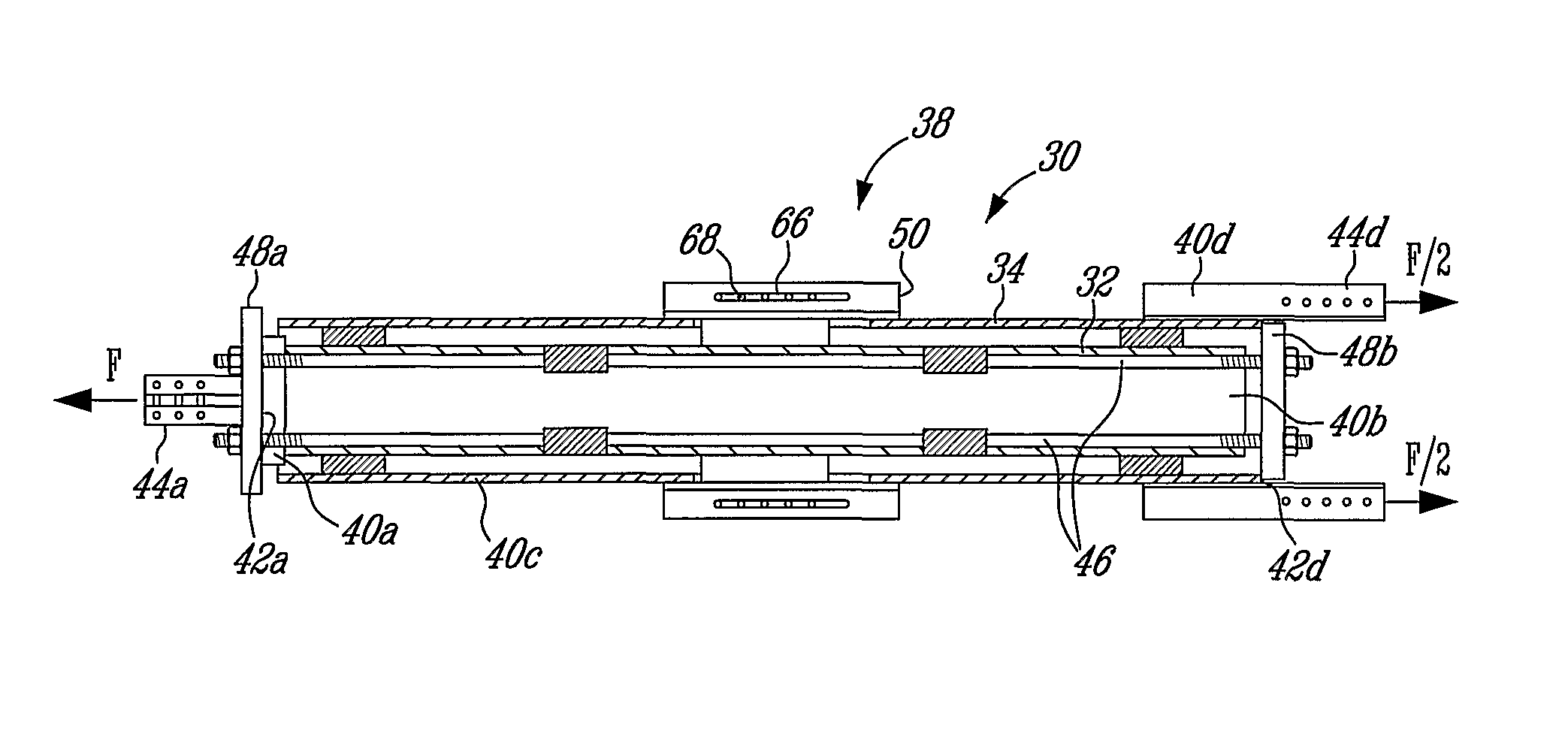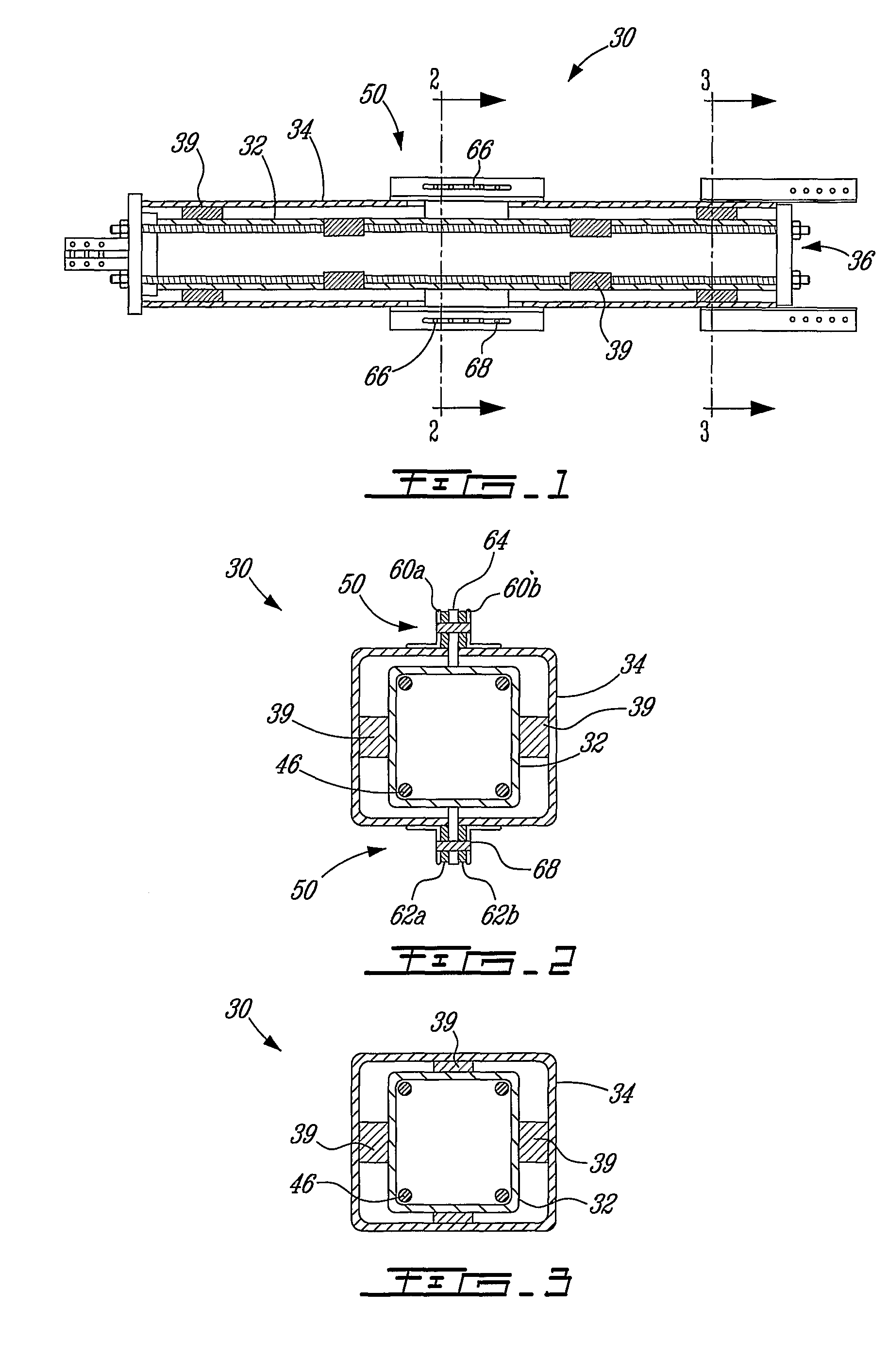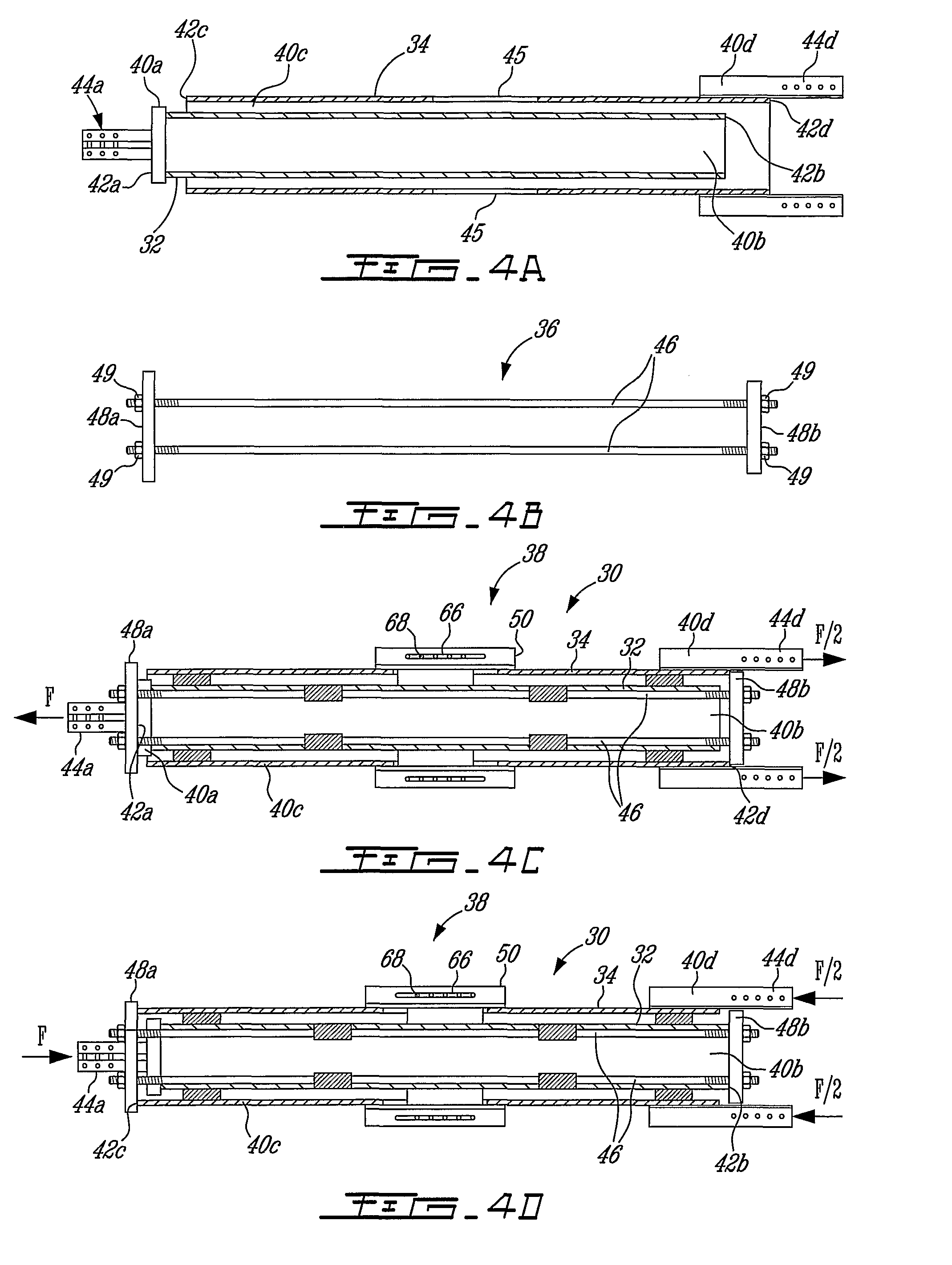Self-centering energy dissipative brace apparatus with tensioning elements
a self-centering, energy dissipative technology, applied in the direction of building components, building types, constructions, etc., can solve the problems of increasing repair costs, economic unfeasibility, and energy dissipation per cycle through hysteretic yielding, and achieve efficient self-centering characteristics and minimize structural damage
- Summary
- Abstract
- Description
- Claims
- Application Information
AI Technical Summary
Benefits of technology
Problems solved by technology
Method used
Image
Examples
second embodiment
[0127]A brace apparatus 130 according to the invention is illustrated in FIGS. 15 to 22. For concision purposes, only the differences between the brace apparatus 130 and the brace apparatus 30 illustrated in FIGS. 1 to 14j will be described hereinbelow. For simplification purposes, end connections (44a, 44d) will not be represented on FIGS. 15 to 22.
[0128]In this second illustrative embodiment, the brace apparatus 130 includes a first bracing member 132, a second bracing member 134, a tensionable assembly 136 and an energy dissipative system 138.
[0129]The energy dissipative system 138 includes two friction mechanisms 150a, 150b provided in proximity of the ends 140a, 140b, 140c, 140d. These friction mechanisms 150a, 150b each includes support members 160a, 160b, 160c, 160d mounted on the second bracing member 134 and extending members 164a, 164b mounted on the first bracing member 132. In this illustrative embodiment, the support members 160c, 160d and the extending member 164a furt...
third embodiment
[0132]A brace apparatus 230 according to the invention is illustrated in FIG. 23. For concision purposes, only the differences between the brace apparatus 230 and the brace apparatus 30 illustrated in FIGS. 1 to 14j will be described hereinbelow.
[0133]In this illustrative embodiment, the brace apparatus 230 includes an inner bracing member 232, and two outer bracing members 234, 235 that are located on each side of the inner bracing member 232, a tensionable assembly 236, an energy dissipative system 238 and guiding elements 239.
[0134]The inner and outer bracing members 232, 234, 235 have ends 240a, 240b, 240c, 240d, 240e, 240f provided with respective abutting surfaces 242a, 242b, 242c, 242d, 242e, 242f. Ends 240a, 240d and 240f are further provided with end connections 244a, 244d, 244f, which in this embodiment include a threaded portion 245a, 245d, 245f.
[0135]The tensionable assembly 236 includes abutting elements 248a, 248b interconnected by tensioning elements 246. The abuttin...
first embodiment
[0138]The brace apparatus 230 operates in a similar way as described in the However, the loading force applied to the outer bracing members 234, 235 is half the force applied to the inner bracing member 232, but the effective apparatus 230 elongation is the same since two outer bracing members 234, 235 participate in elongating the apparatus 230.
[0139]A person skilled in the art will easily understand that the energy dissipative mechanism illustrated and described in this embodiment may be replaced by another hereinabove presented energy dissipative mechanism, such as, for example, a yielding, viscous, visco-elastic, or hysteritic mechanism.
PUM
 Login to View More
Login to View More Abstract
Description
Claims
Application Information
 Login to View More
Login to View More - R&D
- Intellectual Property
- Life Sciences
- Materials
- Tech Scout
- Unparalleled Data Quality
- Higher Quality Content
- 60% Fewer Hallucinations
Browse by: Latest US Patents, China's latest patents, Technical Efficacy Thesaurus, Application Domain, Technology Topic, Popular Technical Reports.
© 2025 PatSnap. All rights reserved.Legal|Privacy policy|Modern Slavery Act Transparency Statement|Sitemap|About US| Contact US: help@patsnap.com



